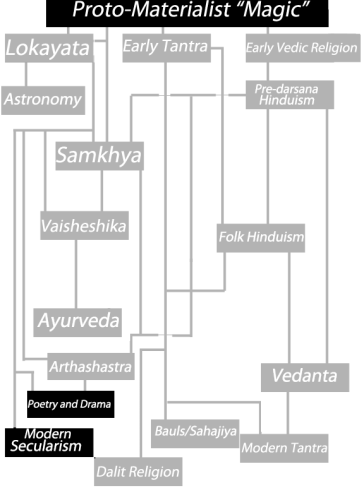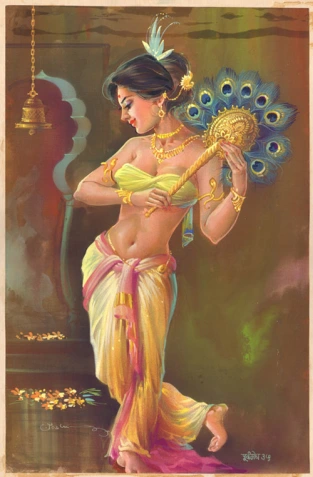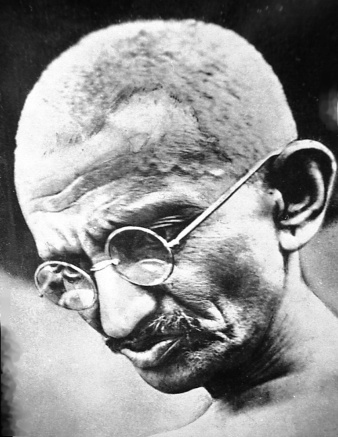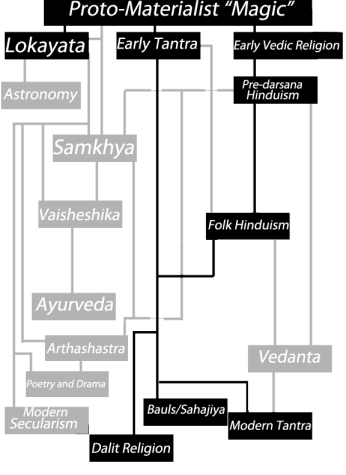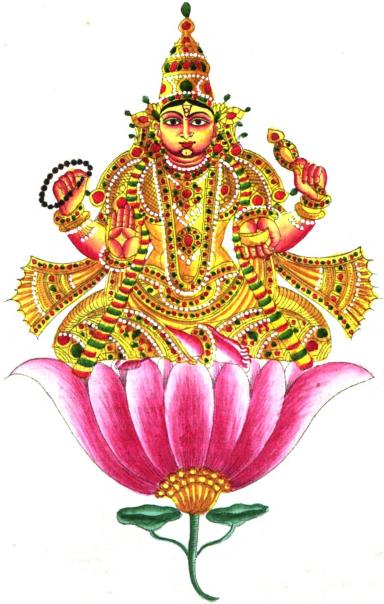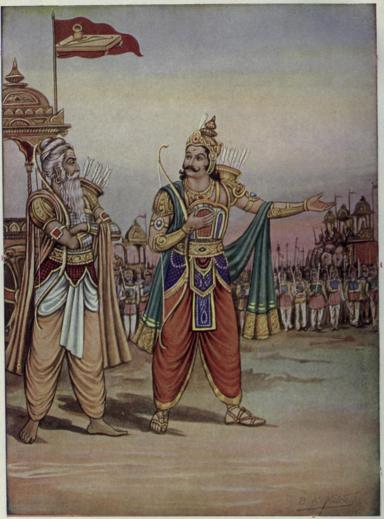“We must at present do our best to form a class who may be interpreters between us and the millions whom we govern, –a class of persons Indian in blood and colour, but English in tastes, in opinions, in morals and in intellect.” -Lord Thomas Babington Macaulay
“Sexual pleasure is not pleasure. Sex-pleasure is the most devitalizing and de-moralizing of pleasures. Sexual pleasure is not pleasure at all. It is mental delusion. It is false, utterly worthless, and extremely harmful.” -Swami Sivananda Saraswati

An old painting of Kali in Kalighat painting style. This is a blend of traditional Bengali folk styles, and European painting. An in-between version of this scene, not as sexualized as ancient depictions, but not as tame as modern ones either. Image Source.
Westernized or Anglicized Hinduism describes the religious system which is adhered to by most Hindus living in the United States and Britain, as well as by those in the modern Hindu urban elite, middle class, and urban working class. Essentially, any Hindu population which has experienced the impact of a modern education system for a few generations now subscribes to a Westernized variant of the belief system.
Initially I was planning on titling this piece “The Anglicization of Hinduism,” as that is what the bulk of this article pertains to, but that would entail a slight misnomer. This is because aside from morphing under British pressure, the most ancient substratum belief of the Hindu philosophical tree– namely Tantra– has been under a far longer lasting, but less severe morphing due to the influence of Vedic Brahminical tradition which arose in the Western part of the Indian subcontinent. Then, in the British period orthodox Vedic Brahmins eagerly collaborated with the colonial regime. Using it as their vehicle, both the Brahminical and Victorian worldviews, began to permeate the Hindu cultural landscape in unison.
Thus, Hinduism has been “westernized” in two senses: Recent, and rapid influence from Britain, and ancient, gradual influence from Western India. Anglicization and Sanskritization.
Basic Characteristics of Westernized Hinduism in Hindu terms: Modern, Westernized Hinduism is essentially a modified form of Advaita Vedanta, though ISKON (a dualist sect), the Brahmo Samaj, Arya Samaj, Gandhian Hinduism, and indeed nearly every major Hindu religious movement since 1800 can be characterized as Westernized Hinduism, Anglicized Hinduism, or Neo-Hinduism. It is normally highly monistic, and places an emphasis on Bhakti and/or Karma Yoga. Tantra, especially left-hand path Tantra is conspicuously absent. Most Neo-Hindus see Hinduism both as a specific religion, and also as a meta-religious framework, which encompasses all religions. The most popular text in this branch of Hinduism is the Bhagavad Gita. More on all of this later.
Formation of Westernized Hinduism: That covers the Hindu lineage, but there is of course a Western lineage as well. it is also the product of a violent and rapid change in the Indian social order– namely the advent of British colonialism, and eventually modern capitalism. The British Raj accorded a privileged role to Christian values and Western concepts. Starting in about 1858, when the British East India Company was forced to transfer power to the British monarchy, the British began to more actively inject their civilizational model into the subcontinent. The imposition of British political institutions and laws on Indian society, the state the support of British missionaries, the state encouragement of convent education and other forms of British education, and the selection of conservative, orthodox Brahmins for use in writing and interpreting what became “Anglo-Hindu law,” and the uniform application of that law to all of Hindu society, are all examples of this sudden change in traditional Hindu society.
Continue reading →
